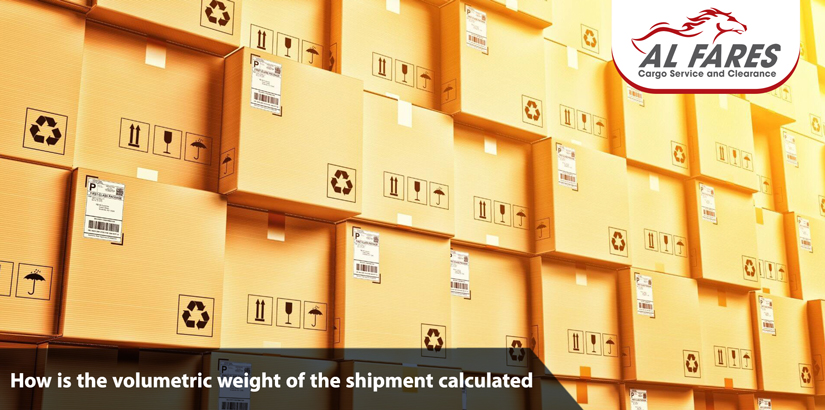How is the volumetric weight of the shipment calculated?
In the world of shipping companies, there is a common term used, which is “volumetric weight”, and volumetric weight is a term meaning (dimensional weight) - that is, the dimensions of the parcel or shipment - and volumetric weight is affect the cost of transporting a shipment and that the amount of space occupied by that cargo on board of the aircraft, for example.The difference between the actual weight and volumetric weight:
The actual weight of the shipment may be small, i.e., of low density, while the size of the shipment is large. If we compare a shipment whose actual weight is 100 kg of cotton and a shipment whose actual weight is 100 kg of iron, we find that they have the same actual weight, except that the volumetric weight of each is different from the other. As the size of cotton is greater than iron, which means that it will occupy a large space, and in this case, it will take a greater part of the space of the means of transport, whether plane, truck, or ship, and in this case the customer will be charged for the space occupied by his shipment, not the actual weight for the shipment.For this reason, the actual weight of the shipment is calculated, and a comparison is made between it and the actual weight of it, to find out which of the two weights is greater, and accordingly the greater weight is used in calculating the final shipping cost of the shipment.
Here, the importance of experience and accuracy in the work of air freight companies emerged, through the creation of methods for packaging and packages of goods and shipments in a way that reduces the size of the shipment, which saves on shipping costs.
Method of calculating volumetric weight:
1- The dimensions of the shipment are measured: length - width - height2- Then calculate the volume of the shipment = length x width x height
3- Then divide the volume of the shipment by the volume factor, usually its value 5000.
4- Round the result to the nearest whole number
An example of calculating volumetric weight:
Suppose we have a shipment whose real weight is 16 kg, and its dimensions (length 70 cm, width 50 cm, height 50 cm)
Calculate the volume of the shipment = length x width x height
= 70 x 50 x 50 = 175000
Divide the volume of the shipment / 5000 = 175000 / 5000 = 35 kilograms
- In this case, the shipping company will take the largest weight between the actual and volumetric weight of that shipment, and here is the volumetric weight of 35 kg, and the shipping cost is calculated accordingly.
Who determines the volume factor?
The volumetric factor or (DIM), whose value is determined by international shipping companies such as UPS, Fedex, DHL according to the type of shipment (land, air, or sea) and whether the delivery is local or international.For international shipping, the most common volumetric factor constant is 5000 m 3 / kg, and some companies may calculate it as 4000 m 3 / kg
How can the volumetric weight of the shipment be reduced?
- You can use small boxes as much as possible, because large boxes mean an increase in the volumetric weight of the shipment, which leads to an increase in shipping costs, and consideration must be given to maintaining the integrity of the shipment when placing it in small boxes so that it is not compressed inside the box to the detriment of its safety. There should be space in the box to put air bubble wraps or small sponge granules around the shipment to preserve them.
- Resorting to companies such as Al-Fares Cargo Services that work to professionally repack and repack the shipment to reduce the volumetric weight of the shipment, which facilitates shipping operations and reduces costs and burdens on the company's customers.
- Take advantage of freight agents who ship large quantities, which qualifies them to take large discounts from international companies, and here Al-Fares Air Cargo Company is distinguished by this point due to the large quantities of shipments it makes, which made it a global ability to provide savings and discounts in shipping costs for different shipments, which serves its customers and saves them a lot.


 Track Your Shipment
Track Your Shipment
 Online Enquiry
Online Enquiry
 Sign In
Sign In
 English
English

 Alfares Cargo
Alfares Cargo
 Logistic Informations
Logistic Informations
 2023-06-10
2023-06-10










